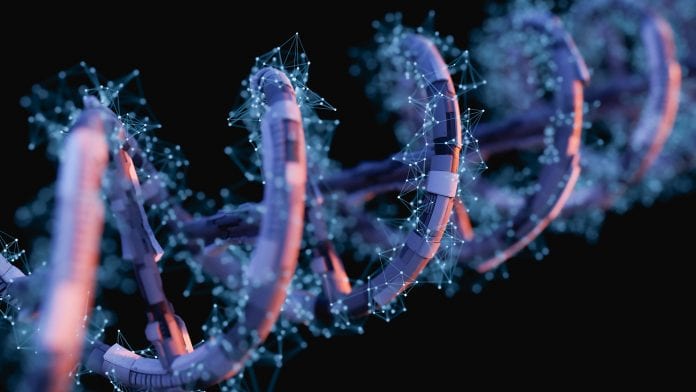
Scientists have used stem cell technology to restore old human cells to a more youthful and vigorous state.
Old human cells return to a more youthful and vigorous state through stem cell technology, after being induced to briefly express a panel of proteins involved in embryonic development.
The researchers, at the Stanford University School of Medicine, also found that elderly mice regained youthful strength after their existing muscle stem cells were subjected to the rejuvenating protein treatment and transplanted back into their bodies.
The proteins, known as ‘Yamanaka factors’, are commonly used to transform an adult cell into what are known as induced pluripotent stem cells, or iPS cells.
The study was published in the journal Nature Communications.
Rejuvenating human cells
The study found that inducing old human cells in a lab dish to briefly express these proteins rewinds many of the molecular hallmarks of aging and renders the treated cells nearly indistinguishable from their younger counterparts.
Senior author of the study, Vittorio Sebastiano, PhD, assistant professor of obstetrics and gynecology and the Woods Family Faculty Scholar in Paediatric Translational Medicine, said: “When iPS cells are made from adult cells, they become both youthful and pluripotent. We’ve wondered for some time if it might be possible to simply rewind the aging clock without inducing pluripotency. Now we’ve found that, by tightly controlling the duration of the exposure to these protein factors, we can promote rejuvenation in multiple human cell types.”
Co-author Thomas Rando, professor of neurology and neurological sciences and the director of Stanford’s Glenn Center for the Biology of Aging, said: “We are very excited about these findings. My colleagues and I have been pursuing the rejuvenation of tissues since our studies in the early 2000s revealed that systemic factors can make old tissues younger.”
The role of proteins in rejuvenation
Researchers in Sebastiano’s laboratory make iPS cells from adult cells, such as those that compose skin, by repeatedly exposing them over a period of about two weeks to a panel of proteins important to early embryonic development by introducing daily, short-lived RNA messages into the adult cells. The RNA messages encode the instructions for making the Yamanaka proteins. Over time, these proteins rewind the cells’ fateand push them backward along the developmental timeline until they resemble the young, embryonic-like pluripotent cells from which they originated.
During this process the cells not only shed any memories of their previous identities, but they revert to a younger state. They accomplish this transformation by wiping their DNA clean of the molecular tags that not only differentiate, say, a skin cell from a heart muscle cell, but of other tags that accumulate as a cell ages.
The researchers compared the gene-expression patterns of treated cells and control cells, both obtained from elderly adults, with those of untreated cells from younger people, and found that cells from elderly people exhibited signs of aging reversal after just four days of exposure to the reprogramming factors. Whereas untreated elderly cells expressed higher levels of genes associated with known aging pathways, treated elderly cells more closely resembled younger cells in their patterns of gene expression.
When the researchers studied the patterns of aging-associated chemical tags called methyl groups, which serve as an indicator of a cell’s chronological age, they found that the treated cells appeared to be about 1.5 to 3.5 years younger on average than untreated cells from elderly people, with peaks of 3.5 years (in skin cells) and 7.5 years (in cells that line blood vessels).
The researchers also isolated cells from the cartilage of people with and without osteoarthritis and found that the temporary exposure of the osteoarthritic cells to the reprogramming factors reduced the secretion of inflammatory molecules and improved the cells’ ability to divide and function.
The researchers are now optimising the panel of reprogramming proteins needed to rejuvenate human cells and are exploring the possibility of treating cells or tissues without removing them from the body.









